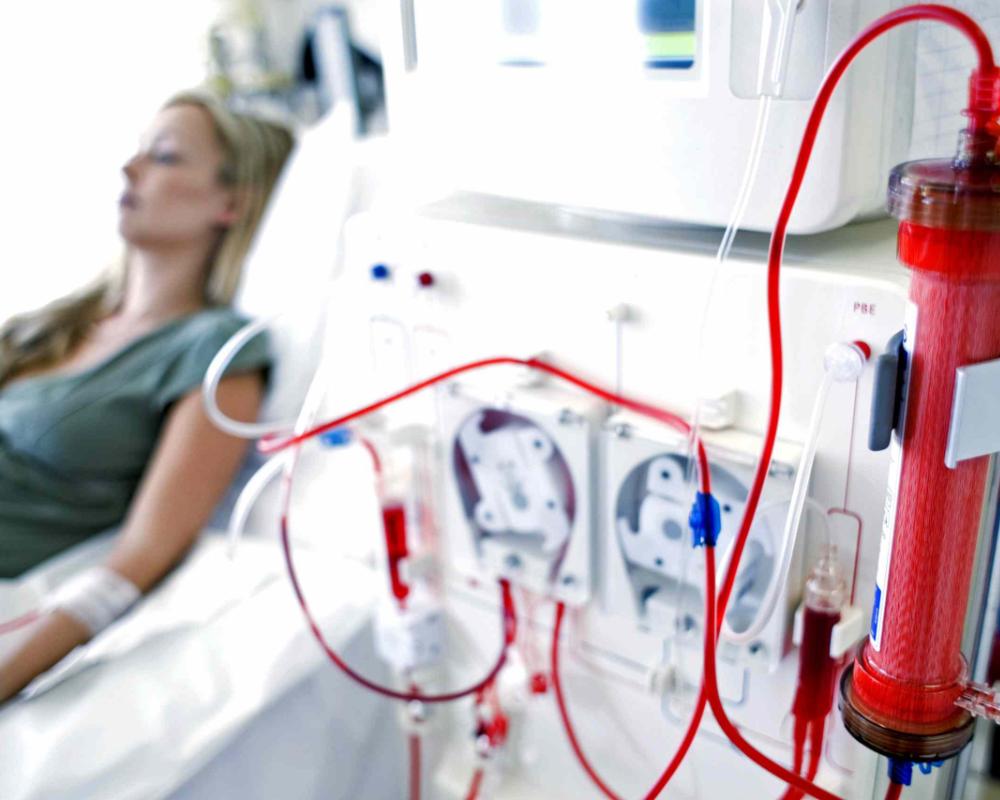Early Kidney Disease Symptoms in Females: Recognizing the Signs
Detecting Early kidney disease symptoms in females. Kidney disease is a serious health condition that affects millions of people worldwide. Although both males and females can develop kidney disease, females are at a higher risk due to certain factors like pregnancy, menopause, and autoimmune diseases. Recognizing the early symptoms of kidney disease in females can help prevent further damage and promote early intervention.
Common Symptoms of Early Kidney Disease in Females
Early kidney disease may not cause noticeable symptoms in its early stages, but as the condition progresses, females may experience the following:Changes in Urination
Changes in urination are one of the earliest signs of kidney disease in females. The kidneys play a vital role in filtering waste and excess fluid from the blood, which is then eliminated from the body as urine. When the kidneys are not functioning properly, it can affect the volume, color, and odor of urine.
Females with early kidney disease may notice an increase or decrease in urine output, or changes in the frequency of urination. They may feel the urge to urinate more frequently than usual, or conversely, may have difficulty urinating.
They may also experience pain or discomfort while urinating.
Another common symptom of changes in urination is the appearance of foamy or frothy urine. This is caused by the presence of protein in the urine, which can be a sign of kidney damage. Proteinuria, or the presence of protein in urine, is one of the key diagnostic criteria for kidney disease.
In addition to changes in urine output, females with kidney disease may also notice changes in the color and odor of their urine. Urine may appear darker than usual, indicating the presence of waste products in the blood that are not being filtered properly. On the other hand, urine may appear lighter in color, indicating that it is diluted due to excess fluid in the body.
Changes in urination are often accompanied by other symptoms of kidney disease, such as swelling, fatigue, and high blood pressure. Females who experience these symptoms should consult a healthcare provider to determine if kidney disease is the underlying cause. Early detection and treatment of kidney disease can help prevent further damage and improve the chances of successful treatment.
Swelling
Swelling, also known as edema, is a common symptom of kidney disease in females. It occurs when excess fluid accumulates in the body's tissues, leading to a buildup of fluid that causes swelling in different parts of the body.
Swelling is often one of the first symptoms that females with kidney disease notice. It typically starts in the feet and ankles and can gradually spread to other parts of the body, such as the hands, face, and abdomen.
The swelling may be accompanied by a feeling of tightness or discomfort in the affected area.
The reason why kidney disease can cause swelling is that the kidneys play a crucial role in removing excess fluid from the body. When the kidneys are not functioning properly, they may not be able to remove fluid as effectively, leading to fluid buildup and swelling.
Swelling due to kidney disease is often worse in the morning and improves throughout the day. It may be more noticeable after long periods of standing or sitting.
In some cases, swelling may be accompanied by other symptoms such as shortness of breath, chest pain, or a rapid heartbeat, which can indicate a more serious condition and require immediate medical attention.
Females who experience swelling should consult a healthcare provider to determine the underlying cause. Treatment for swelling due to kidney disease may include medications to manage fluid levels, lifestyle changes such as reducing salt intake, and treatment for the underlying kidney disease.
In summary, swelling is a common symptom of kidney disease in females and can occur due to fluid buildup in the body.
Early detection and treatment of kidney disease can help prevent further damage and improve the chances of successful treatment. Females who experience swelling should consult a healthcare provider to determine the underlying cause and appropriate treatment.
Fatigue
Fatigue, or a feeling of extreme tiredness or weakness, is a common symptom of kidney disease. It can occur due to the buildup of waste products in the blood, which can make the body feel sluggish and tired. In addition to waste buildup, kidney disease can cause anemia, which is a condition characterized by a shortage of red blood cells. Red blood cells are responsible for carrying oxygen throughout the body, and when there are not enough of them, it can lead to fatigue and weakness.Females with kidney disease may experience fatigue that is not relieved by rest or sleep. They may have difficulty completing normal daily activities and may feel exhausted even after mild physical exertion. Fatigue can also affect cognitive function, leading to difficulty concentrating or memory problems. Fatigue can be a challenging symptom to manage, but there are ways to improve energy levels and reduce the impact of fatigue on daily life. Maintaining a healthy diet, engaging in regular exercise, and getting enough rest can all help improve energy levels and reduce fatigue.
Females with kidney disease should consult their healthcare provider to determine the underlying cause of their fatigue and develop a plan to manage it effectively. In some cases, fatigue may be a sign of more advanced kidney disease, and prompt medical attention may be necessary. Treatment for fatigue due to kidney disease may include medications to manage anemia or other underlying conditions, lifestyle changes such as improving diet and exercise habits, and dialysis or kidney transplant in more severe cases.
In conclusion, fatigue is a common symptom of kidney disease in females and can occur due to waste buildup and anemia. Females who experience fatigue should consult their healthcare provider to determine the underlying cause and develop a plan to manage it effectively. With proper treatment and self-care, fatigue can be managed, and energy levels can be improved.
Blood in Urine
Blood in the urine, also known as hematuria, is a concerning symptom that can be indicative of kidney disease in females. It is often a sign of damage to the kidneys, bladder, or other parts of the urinary system. The presence of blood in the urine can range from being barely noticeable to severe and can appear pink, red, or brown.Women with hematuria may experience pain or discomfort while urinating and may notice blood clots in their urine. Blood in the urine can be caused by a variety of factors, including kidney stones, infections, tumors, and trauma to the urinary tract. It is important to note that blood in the urine can also be a symptom of other underlying conditions, such as bladder or kidney cancer. Females who experience blood in their urine should seek prompt medical attention to determine the underlying cause and receive appropriate treatment.
Diagnosis of blood in the urine often involves a physical exam, urinalysis, and imaging tests such as an ultrasound or CT scan. Treatment for hematuria depends on the underlying cause and may include medications, lifestyle changes, or surgery. Women with kidney disease who experience blood in their urine may require specific treatments to address the underlying kidney condition.
For example, if hematuria is due to glomerulonephritis, an inflammation of the kidney's filtering system, treatment may include medications to reduce inflammation and manage high blood pressure. In conclusion, blood in the urine is a concerning symptom that can be indicative of kidney disease in females. Women who experience blood in their urine should seek prompt medical attention to determine the underlying cause and receive appropriate treatment.
With early diagnosis and treatment, the underlying kidney condition can be effectively managed, and the risk of complications can be reduced.
High Blood Pressure
High blood pressure, or hypertension, is a common condition that can be a contributing factor to the development of kidney disease in females. Hypertension can cause damage to the blood vessels in the kidneys, leading to decreased kidney function over time. Females with high blood pressure may not experience any symptoms initially, but over time, they may experience headaches, dizziness, and blurred vision.High blood pressure can also cause damage to other organs in the body, such as the heart and brain, increasing the risk of heart attack, stroke, and other complications. It is essential for females with high blood pressure to monitor their blood pressure regularly and take steps to manage their condition effectively. This may include lifestyle changes such as reducing salt intake, maintaining a healthy weight, and engaging in regular exercise. Medications may also be necessary to manage high blood pressure, and females should consult their healthcare provider to determine the best treatment approach.
If high blood pressure is left untreated or poorly managed, it can lead to kidney damage and the development of kidney disease. Females with kidney disease and high blood pressure may require specific treatments to manage their condition, such as medications to control blood pressure and protect kidney function. Regular monitoring of blood pressure is crucial for females with kidney disease to prevent further kidney damage and reduce the risk of complications. Females should also work closely with their healthcare provider to manage their kidney disease effectively, which may involve lifestyle changes, medications, and regular monitoring of kidney function. In summary, high blood pressure is a common condition that can contribute to the development of kidney disease in females.
Females with high blood pressure should monitor their blood pressure regularly and take steps to manage their condition effectively to reduce the risk of complications. If kidney disease is present, specific treatments may be necessary to manage high blood pressure and protect kidney function.
Takeaway
Early detection and treatment of kidney disease can help prevent the condition from progressing to its later stages, which can lead to kidney failure and the need for dialysis or a kidney transplant. Females who are at risk of kidney disease or have a family history of the condition should be aware of these early symptoms and seek medical attention if they experience them. In conclusion, recognizing the early symptoms of kidney disease in females is crucial for preventing further damage and promoting early intervention.Changes in urination patterns, swelling, fatigue, blood in urine, and high blood pressure are some of the common signs of early kidney disease in females. By being aware of these symptoms, females can take the necessary steps to protect their kidney health and prevent the condition from progressing.


